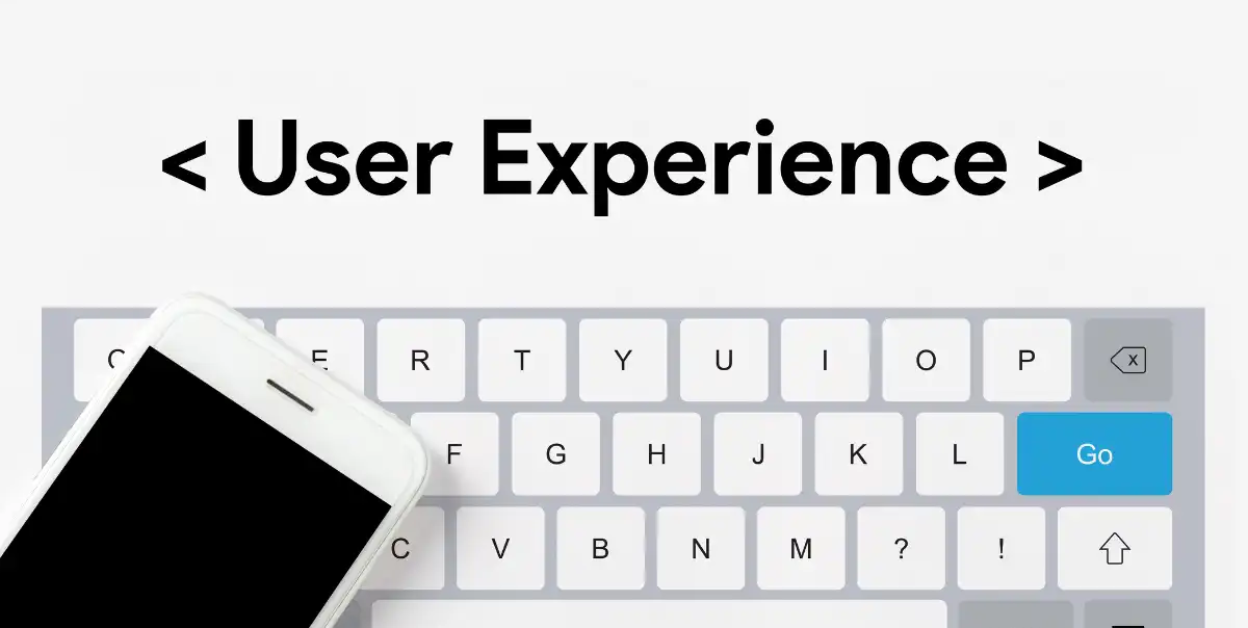How to Improve Customer Experience on Website.
Unlock the Secrets to an Unforgettable Customer Experience on Your Website

In today’s digital age, the customer experience can make or break a website. With over 4.72 billion internet users worldwide and an ever-growing number of websites, ensuring your site stands out from the competition has become more critical than ever by offering an unparalleled user experience.
Research shows that 88% of online consumers are less likely to return to a site after a poor user experience, making this aspect of your website a top priority. So, how do you transform your site into a customer experience powerhouse? We’ve got you covered with 10 essential tips that will not only improve your website’s user satisfaction but also boost your conversion rates and brand loyalty.
#1 Know Your Target Audience
Before tackling design and functionality, it’s vital to understand your target audience and their needs. Your website is for them, not you! Researching your industry’s trends, competition, and customer base is essential. This information helps you make informed decisions about your website’s content, design, and functionality, improving user experience.
For instance, if your website sells products, a user-friendly interface is necessary to make it easy for customers to navigate, add items to their cart, and checkout securely. On the other hand, if you run a news website, an engaging layout with recent and relevant stories can help you attract readers and grow your audience.
#2 Create Clear and Intuitive Navigation
With a deeper understanding of your audience, focus on your website’s design and navigation. An attractive, well-structured site creates an engaging experience for visitors, encouraging them to explore and interact with your content.
Effortless navigation lets customers find new products or revisit old ones without frustration. intuitive and user-friendly website navigation system can keep visitors engaged and lead to improved conversions and satisfaction over time. To enhance your user experience through navigation, try incorporating these tips:
- Keep a clear, concise menu with a maximum of seven items.
- Organize items logically and use icons or images for distinction.
- Implement breadcrumbs for easy site navigation.
- Ensure menus are visible on all devices.
- Provide a search bar for quick access to specific content.
#3 Focus on Website Speed and Performance
To deliver an exceptional customer experience, optimizing your website’s speed and performance is crucial. A slow-loading site frustrates users and can lead to them leaving your site for a faster alternative. Research from Google reveals that as page load time increases from one to three seconds, the probability of a user abandoning your site rises by 32%. Here are some practical tips for improving website speed:
- Minimize HTTP requests: Fewer requests mean a faster site load time.
- Use a content delivery network (CDN): A CDN, consisting of servers distributed worldwide, serves website files to users faster than a single server.
- Optimize your images: Image files can take up a lot of space, so optimize them for web use with tools like Photoshop or online platforms like TinyPNG and CompressJPEG.
- Enable browser caching: Browser caching stores certain files locally on the user’s computer, reducing the time needed to load the website.

#4 Embrace Responsive, Mobile-Friendly Design
With mobile internet usage dominating, a responsive and mobile-optimized website is critical for businesses. Enhance customer experience and search engine ranking by implementing these strategies:
- Test your site on various devices using emulators or responsive design tools to identify and fix design issues.
- Compress and optimize images for faster loading and seamless user experience across devices.
- Choose a responsive theme that aligns with your brand and audience while maintaining mobile-friendliness.
- Keep content concise; use headings, subheadings, and white space for easy scanning and readability.
#5 Using White Space Effectively
White space, also known as negative space, refers to the empty areas between design elements on a webpage. When used strategically, it can enhance your website’s aesthetics and functionality.
Benefits of White Space
- Improves readability: Studies show that using white space around text and titles can increase comprehension by up to 20%.
- Highlights important elements: White space can highlight crucial areas, such as call-to-action buttons and critical messages.
- Creates a clean and modern look: A clutter-free design helps establish a professional image and makes your website more visually appealing.
#6 Addressing 404 Errors
A 404 error occurs when a user tries to access a webpage that cannot be found on your website. These errors can negatively impact user experience and search engine rankings. Here’s how to address 404 errors effectively:
Monitor and identify 404 errors: Use tools like Google Search Console or third-party software to detect broken links and their causes.
Create a custom 404 page: Design a visually appealing and informative 404 page that guides users to relevant sections of your website.
Redirect broken links: When appropriate, use 301 redirects to send users from a broken link to a working page with similar content.
Fix internal links: Regularly audit your website to identify and correct broken internal links.
#7 Creating Sitewide Consistency
Consistency throughout your website is vital for presenting a smooth user experience and reinforcing your brand identity. Use these guidelines to achieve sitewide consistency:
Visual Consistency
- Color palette: Pick a color scheme that reflects your brand and use it consistently throughout your website.
- Typography: Choose a few fonts that complement each other and use them repeatedly for headings, body text, and other elements.
- Imagery: Maintain a consistent style and quality for images, icons, and other visuals to create a cohesive look.
Functional Consistency
- Navigation: Keep your website’s main navigation menu similar across all pages for easy access and usability.
- Interaction patterns: Standardize user interactions like button clicks and form submissions to make a predictable and familiar user experience.

#8 Create Engaging and Valuable Content
Creating engaging and informative content is a fantastic way to improve your website’s user experience. Determine whether text, visuals, or a mix suits your industry and audience. Build high-quality content that’s easy to read and comprehend.
When writing content, utilize a direct and concise tone. Simplify long paragraphs into smaller divisions, add headings or bullet points to essential data, and use images to break up lengthy text.
Visual substance, such as videos, infographics, and images, can also enhance the consumer experience. Images should be high-quality, and videos should be concise and educational. Infographics help convey complex material in a simple, digestible way.
Regardless of the content type, ensure it’s relevant to your audience and brand. To maintain consistency, utilize your brand’s tone and sound while creating content.
#9 Integrating user feedback and analytics
You can always enhance even the most well-designed website. By collecting user feedback and analyzing performance metrics, you can identify areas that need improvement to provide a continuously-improved customer experience.
To get user feedback, use tools like surveys, feedback forms, or live chat features to obtain first-hand user insights about their website experience. To identify obstacles or confusion sources, utilize usability testing by observing real user interactions through in-person sessions or online user testing platforms.
Combine qualitative feedback with quantitative data analysis using tools like Google Analytics. Focus on crucial customer experience indicators, including bounce rate, time on site, and conversion rate, as well as additional specific metrics such as click-through rates and page load times. Use these insights to lead continuous improvements and optimizations, ensuring your website consistently provides an excellent user experience.
#10 Easy Access to FAQs and Support: Enhancing the Customer Experience
Providing simple access to frequently asked questions (FAQs) and customer support is the key to generating an outstanding customer experience. It helps customers to get quick answers to their queries, reduces frustration, and boosts customer happiness.
An organized FAQ section can address common customer concerns and questions, reducing the need for direct support inquiries. To create an effective FAQ section:
- Analyze customer interactions and support tickets to determine the most frequently asked questions and concerns.
- Categorize questions for easy navigation and relevant information.
- Write easy-to-understand responses to each question.
- Keep updating FAQs as new issues arise or services evolve.
Providing easy access to customer support is just as essential as an effective FAQ section. Here are some strategies to consider:
- Display contact information prominently on your website to make it easy for customers to ask for help.
- Provide real-time assistance to customers through a live chat support feature.
- Implement a support ticket system that enables customers to submit inquiries and track progress efficiently.
- Offer multichannel support to cater to customer preferences and needs.
Maximize Your Customer User Experience Now!
Incorporating these ten tips into your website will help you create a more enjoyable and successful customer user experience.
Remember that user experience is about creating a smooth journey for your site visitors. Take time to evaluate your website’s effectiveness, collect customer feedback, and consider analytical performance metrics for greater insights.
Contact LCMS Digital Solutions for an expert consultation if you want help improving your customer experience. Let us help ensure your website is easy to navigate with great content, visuals, and optimized performance metrics.